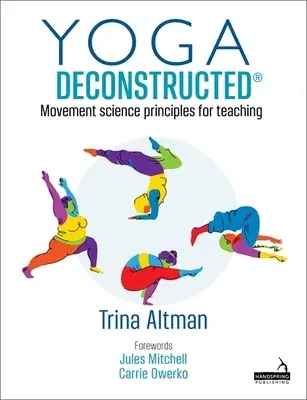Many people are drawn to a physical yoga practice as a way to reduce
stress and move more. However, because most of their time is spent at a
desk, their bodies are often not prepared to perform many of the
traditional physical poses.
Additionally, naturally flexible people will be drawn to the practice,
because it comes easily to them. However, they frequently lack the
stability needed to support their joints in these positions, which makes
them vulnerable to pain and repetitive stress injuries.
Yoga Deconstructed(R) offers the experience of yoga with an
interdisciplinary approach that integrates other movement modalities and
modern movement science. This approach helps students become more
well-rounded in their movements, which better prepares them for asana
and improves their ability to function in everyday life.
This book teaches:
How to help students move better and reduce their risk of injury within
the scope of yoga, Pilates or any other movement modality.
Regressions and progressions for human movement and yoga asana to fit
the unique needs of the student.
Critical thinking skills to help students safely transition from
physical therapy to group classes.
Strategies to introduce variability and neuromuscular re-education that
help facilitate tissue resiliency, neuroplasticity, and new motor
patterns.
How to apply a skills-based approach, instead of a lineage-based
approach
Modern movement applications, including somatics, sensory feedback
methods, and corrective exercise.
How to deconstruct and expand yoga asana beyond static, two-dimensional
shapes to reduce the risk of hypermobility and repetitive stress
injuries.

